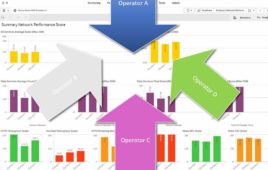T-Mobile is making a case to the FCC for smaller geographic areas and for the maximum amount of 5 MHz spectrum blocks made available in the upcoming AWS-3 spectrum auctions.
In a policy blog yesterday, T-Mobile suggested the Commission try to mirror the geographic market areas for existing AWS-1 licenses, a mix of smaller Cellular Market Areas (CMA) and larger Economic Areas (EA). The carrier also expressed support for the CCA’s proposed compromise of Partial Economic Areas (PEA).
“Regardless of the particular type of license areas the FCC chooses, it is imperative that there be a sufficient number of CMAs or other small geographic areas available in at least two 5×5 megahertz spectrum blocks so that competitive carriers have the opportunity to efficiently match their participation to their requirements,” Kathleen Ham, vice president of regulatory affairs at T-Mobile, wrote in the blog post.
T-Mobile said that if the FCC adopts spectrum aggregation limits as the carrier has suggested, than 5×5 MHz blocks would be optimal in providing bidding flexibility within those guidelines for all carriers large and small.
T-Mobile also took AT&T to task for asserting that results from the 2006 AWS-1 auction reinforced AT&T’s demand for larger blocks and geographic areas.
“AT&T is wrong for several reasons,” T-Mobile wrote, specifically saying AT&T’s reasoning regarding Regional Economic Area Groupings (REAG) is faulty because the FCC doesn’t intend to use REAGs in the AWS-3 auction.
The blog comments are in line with a T-Mobile ex parte filing the FCC this week posted. T-Mobile urged the FCC to package the 50 MHz of AWS-3 up for auction into five 5×5 MHz blocks to “maximize opportunities for competitive carriers to participate to auction.”
In a blog post this week, AT&T anticipated and applauding an order circulating at the FCC calling for two 10×10 MHz EA blocks and one 5×5 MHz CMA block.
The FCC has tentatively scheduled the AWS-3 spectrum auction for September 2014.




